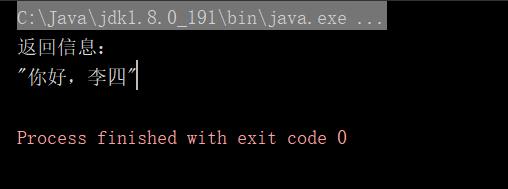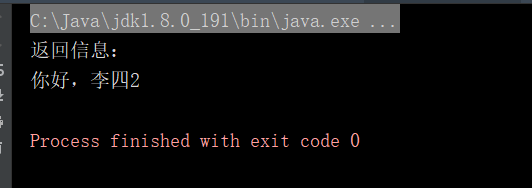HTTP Client
超文本传输协议(http)应该可以说是现在互联网上使用最多最重要的协议了,http协议不仅仅能使我们浏览器上网,还广泛应用在各个系统之间的通信,WebService就是基于http协议进行传输的一种协议。
JDK自带的java.net包下提供了基于HTTP协议的api,但是这个功能并没有完善,因此在实际项目中,还是使用第三方组件apache下的httpclient。新的HttpComponents分别HttpClient和HttpCore两个模块。其中HttpClient提供了面向用户的API,而HttpCore提供了比较底层的API。我们使用HttpClient就能满足我们的需求,而且HttpClient使用起来简单,方便。
http client使用步骤
在使用之前,先创建服务提供方的代码:
@GetMapping(value="/sayHello2")
public String sayHello2(String username){
return "你好,"+ username;
}
使用httpClient大致分为五个步骤:
要使用Http Client,先引入依赖:
<!-- https://mvnrepository.com/artifact/org.apache.httpcomponents/httpclient -->
<dependency>
<groupId>org.apache.httpcomponents</groupId>
<artifactId>httpclient</artifactId>
<version>4.5.2</version>
</dependency>
<!-- https://mvnrepository.com/artifact/commons-logging/commons-logging -->
<dependency>
<groupId>commons-logging</groupId>
<artifactId>commons-logging</artifactId>
<version>1.1.1</version>
</dependency>
1,构建httpclient对象
CloseableHttpClient httpClientDefault = HttpClients.createDefault();
2,构建uri对象
//http://localhost:8081/sayHello?username=李四
URI uri = new URIBuilder().setScheme("http")
.setHost("localhost")
.setPort(8081)
.setPath("/sayHello2")
.addParameter("username", "李四")
.build();
3,构建请求对象
HttpClient支持http/1.1规范中定义的get,head,post,put,delete,trace,options。httpClient为其提供了对应的对象HttpGet,HttpHead,HttpPost,HttpPut,HttpDelete,HttpTrace,HttpOptions。我们使用最多的也就是HttpGet和HttpPost。
HttpGet httpGet = new HttpGet();
httpGet.setURI(uri);
4,发送请求
String returnString = httpClientDefault.execute(httpGet, new ResponseHandler<String>() {
@Override
public String handleResponse(HttpResponse httpResponse) throws ClientProtocolException, IOException {
String toString = EntityUtils.toString(httpResponse.getEntity(), Charset.forName("utf-8"));
return toString;
}
});
5,获取请求结果
System.out.println("返回信息:");
System.out.println(JSON.toJSONString(returnString));
以上步骤是不是很繁琐?当然,HttpClient还提供了流式API更加方便,简单创建http请求
HttpClient流式API
引入支持流式api依赖:
<dependency>
<groupId>org.apache.httpcomponents</groupId>
<artifactId>fluent-hc</artifactId>
<version>4.5.2</version>
</dependency>
使用方式如下:
String uri = "http://localhost:8081/sayHello2?username=李四2";
String string = null;
try {
string = Request.Get(uri).execute().returnContent().asString(Charset.forName("utf-8"));
} catch (IOException e) {
e.printStackTrace();
}
System.out.println("返回信息:");
System.out.println(string);
效果:
RestTemplate
RestTemplate相对于在使用springcloud的开发人员来说就很简单明了了。RestTemplate是Spring提供的用于访问Rest服务的客户端,RestTemplate提供了多种便捷访问远程Http服务的方法,能够大大提高客户端的编写效率。
RestTemplate提供的API很丰富
在springcloud架构的微服务中,直接引用即可:
@RestController
@RequestMapping("/user")
public class UsreController {
@Autowired
private RestTemplate restTemplate;
@RequestMapping("/order/{id}")
public List<Order> getOrdersById(@PathVariable("id") int id){
List<Order> list = restTemplate.getForObject("http://order-server/order/user/"+id,List.class);
return list;
}
}
引申:RPC与分布式服务框架的区别
rpc实现了服务消费者调用方client与服务提供方server之间的点对点调用方式,调用方与服务方一般采用直连的调用方式。
而分布式服务框架,除了包括RPC的特性之外,还包括多台server提供服务的负载均衡策略以及实现方式,服务注册,发布与引入,服务治理,网关等特性。
总得来说,分布式服务框架包含了RPC的特性。
本人水平有限,难免有错误或遗漏之处,望大家指正和谅解,提出宝贵意见,愿与之交流。





